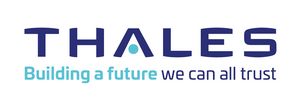Thales

Thales is a global technology leader for the Aerospace, Transport, Defence and Security markets. With 62,000 employees in 56 countries, Thales reported sales of €14 billion in 2015. With over 22,000 engineers and researchers, Thales has a unique capability to design and deploy equipment, systems and services to meet the most complex security requirements. Its exceptional international footprint allows it to work closely with its customers all over the world.
Thales has been involved in Danish projects since 1991, and now due to the significance of the Group’s activities and the market outlooks in the country, Thales has since established a formal country office in January 2015. Here, Thales provides innovative solutions and advanced technologies in Defence, Ground Transportation and Air Traffic Management. Today, Thales in Denmark employs more than 120 people and functions as the hub for eight countries in Northern Europe, i.e. Denmark, Estonia, Finland, Iceland, Ireland, Latvia, Lithuania & Sweden..
Defence:
In Denmark, Thales designs and produces radars in all three domains; air, land and naval. In the land domain, Thales has installed its RAC 3D (Intermediate Range Air Defense Radar), multi-mode radar for the coordination of medium-range, short-range and very-short range air defence weapon systems. It provides a three dimensional air picture up to 100 km. The RAC 3D detects and classifies modern threats, including medium to very low-altitude hovering helicopters.
Thales has also successfully been equipping the Royal Danish Navy with the main radars on its five latest vessels, a class of frigates and flexible support ships. These radars are key functional elements for the ships’ operational capabilities and tasks. Moreover, Thales equips the Danish Army's armoured vehicle fleet with the internal communications and network system called SOTAS. Thales has been a long-lasting supplier for this system and is still assisting the army in the maintenance and further development of this capability.
Aerospace:
Since 1991, Thales has delivered Air Traffic Management (ATM) systems to Denmark in cooperation with NAVIAIR (the Air Navigation Service provider in Denmark). Naviair is a state enterprise under the Ministry of Transport & Energy and controls 158,000 square kilometres of airspace.
Thales has over fifty years of experience in designing and implementing radars and ATM systems and provides a complete multisensory surveillance solution. In Denmark, Thales has installed an ATM system (COOPANS – TopSky ATC and radars) that controls Danish airspace and the airports of Copenhagen, Billund and Roskilde. Denmark, Sweden, Ireland, Austria and Croatia are working together by using the COOPANS system, ensuring harmonisation through a joint product roadmap. This system benefits from the most advanced capabilities to ensure a safe and efficient operation in high traffic densities and complex airspace structures. Thales is maintaining the system until 2018.
Transportation:
In Denmark, Thales boasts a number of significant achievements in round Transportation. Two of the most well-known projects include the modernisation of Danish mainline signalling and the ‘Travel Card’ ticketing system.
Signalling systems: In 2012, Banedanmark, the Danish rail infrastructure manager, awarded a consortium composed of Thales and Strukton Rail with a contract to upgrade the signalling system in Jutland. Located in the Western part of Denmark, the project modernised approximately 1,200 kilometres of the Danish railway network (60%) with the new European ETCS level 2 system. Since then, Thales in Denmark has been working on the design and structure of the system in close cooperation with Strukton Rail. Thales is set to transfer to the maintenance phase by 2021.
Electronic Ticketing Systems: Thales has delivered the Danish Travelcard system and is charge of its operation and maintenance for the next 10 years. Since 2012, the system has been in full national and commercial operation, and with the decision of MidtTrafik and Fynbus to join the Travel Card collaboration, all public transport operators are now connected.